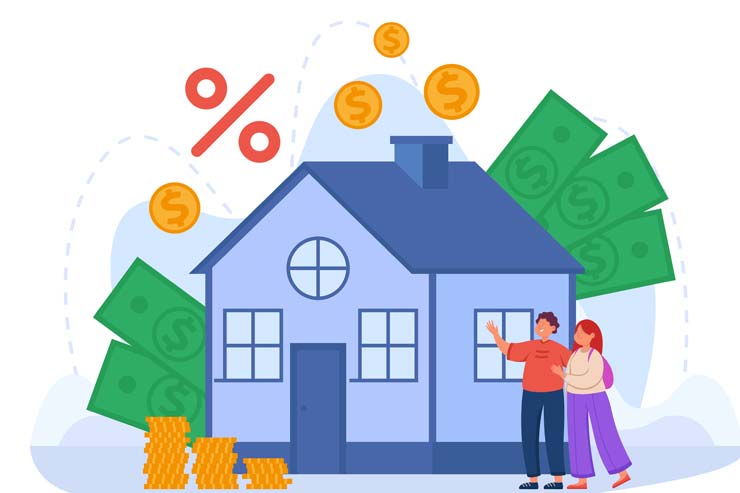The Impact Of Financial Year End On Real Estate Market Trends: What Investors Need To Know

Understanding the cyclical trends in the real estate market can be challenging for investors looking to minimize risk and maximize return. The real estate market is a dynamic system that experiences fluctuations throughout the year. One such period of potential change is the financial year-end. The financial year-end real estate trends impact both buyers and sellers in different ways. Let’s understand the difficulties of how the financial year-end real estate trends change with the best real estate company and how to navigate this market shift effectively.
Investor Influx and the Competition Problem
Financial year-end real estate trends often coincide with a surge in investor activity. Businesses and institutions allocate budgets before the financial year closes, and turn their focus toward strategic real estate investment planning. Real estate generates a steady rental income that attracts this funding to deploy and becomes an attractive option in real estate investment planning. This influx of investor capital can lead to increased competition for attractive properties, especially properties with strong rental yields. Office buildings and well-located retail spaces are likely to see the most significant rise in real estate investment planning and competition during this period.
Negotiation Leverage for Astute Investors
However, the story isn’t entirely one-sided. The pressure to close deals before the financial year ends can also present a window of opportunity for astute investors. Some sellers, motivated by tax implications, a desire to meet investment goals, or simply wanting to clear their books for the new year, might be more open to negotiation. This can be particularly true for properties that haven’t received significant interest or have been on the market for a longer duration. Investors who have done their homework, researched the property and surrounding market, and are prepared to move quickly can potentially secure favorable terms and potentially snag a steal.

Real Estate Investment Planning:Beyond National Trends
To build a real estate investment plan, understanding local market data is essential while national trends. It is important to remember that the real estate market is fundamentally local. Follow these key metrics to consider when building your real estate investment plan:
Local Inventory Levels: Analyzing historical data on inventory levels alongside current trends can provide insights into potential shifts. A high number of listings might indicate a buyers market, while a low inventory scenario could favor sellers. This makes for a more competitive environment for buyers.
Absorption Rates: This key metric tracks how effectively properties are selling within a specific market. Slower rate might provide more room for negotiation while a fast absorption rate suggests strong demand. There is a potential increase in competition for office spaces, particularly in markets with limited inventory.
Beyond the Numbers: Market Segmentation and Niche Opportunities
The real estate market in financial year-end real estate trends comprises various property types. Each with its own set of characteristics and potential year-end trends. Here’s how diverse sectors might be affected:
Residential Market: The financial year-end real estate trends impact on the residential market can be influenced by seasonal factors and local demographics. A study by RentCafe found that December tends to see a 7 % increase in rental listings compared to the annual average in student-heavy areas. This financial year-end real estate trend suggests potentially more bargaining power for tenants looking to rent apartments at the end of the fall semester.
Commercial Market: The commercial real estate market forecast, particularly office spaces or retail location, might see a more noticeable influence from the financial year-end real estate market trends. Businesses might re-evaluate their space needs to expand their footprint, leading to increased activity or potential lease negotiations before the new financial year starts. 38% of businesses are planning to adjust their office space requirements in the next year according to a survey by JLL (JLL Commercial Market Survey). This trend suggests strong opportunities for investors in flexible office spaces.

Real Estate Market Forecast
The financial year-end real estate trends aren’t only the factor influencing the investments. Here are some wider trends that can impact your real estate investment planning decisions.
Interest Rate & Economic Outlook:
- Finance becomes expensive when the interest rate rises, it influences the overall market activity and potential impacting buyer demands.
- A strong economy with high employment rates and consumer confidence often leads to a robust real estate market, with increased buying activity and potentially higher property values.
Conclusion
In the ever-evolving landscape of the real estate market, it offers both challenges and opportunities for investors. By understanding the fundamentals of the financial year-end real estate trends and its impact on various market segments, you can develop a strategic real estate investment plan. A combination of thorough market research, a well-defined investment strategy, and the ability to adapt to changing market conditions with the success that you are expecting. You can increase your chances of finding lucrative real estate opportunities at the financial year-end by surrounding yourself with experienced professionals. So, leverage this knowledge, craft your investment plan, and navigate the financial year-end shift to unlock your real estate investment goals!




Join The Discussion